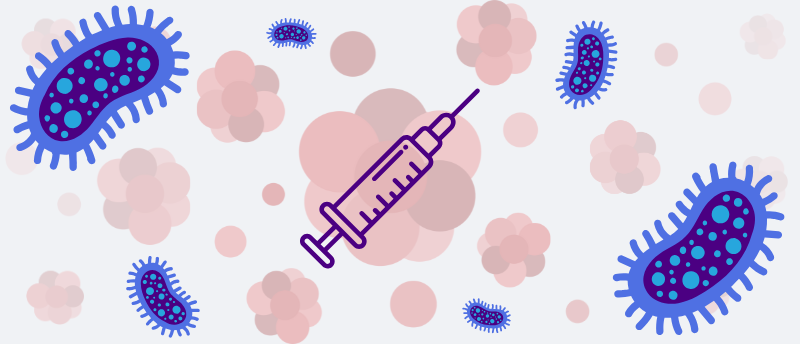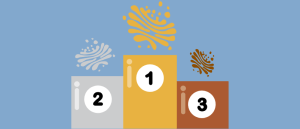Could this marine pathogen hold the key to cancer immunotherapy?

A marine bacterium that selectively targets tumor cells with minimal systemic toxicity could represent the next big thing in cancer immunotherapy.
A naturally occurring, non-engineered bacterium could prove to be a safe and effective vector for cancer immunotherapy, according to new research from the Japan Advanced Institute of Science and Technology (Nomi, Japan). In murine models of colorectal cancer, Photobacterium angustum colonized tumors, activated innate and adaptive immune responses and significantly improved survival.
In recent years, we’ve seen notable advances in cancer immunotherapy, with breakthroughs including immune checkpoint inhibitors and CAR-T cell therapy, however, these are limited by factors such as their high cost, poor tumor antigenicity, immune-related adverse events, and immunosuppressive tumor microenvironments. It is therefore imperative that, alongside the improvement of these therapeutics, we discover alternative therapeutic options that can selectively and precisely target tumor cells while reducing systemic toxicity.
This is where bacteria present a promising opportunity. Thanks to their innate ability to colonize tumors and stimulate host immunity, they are currently being explored as cancer therapeutic agents. Most research in this area has involved genetically engineered bacteria, which pose biosafety risks and regulatory stumbling blocks that may hinder them from reaching their potential. The use of naturally occurring strains, meanwhile, remains in its infancy.
In the new study, researchers evaluated a number of candidates for a naturally occurring, non-engineered bacterial immunotherapy, screening a panel of marine strains for antitumor activity in syngeneic and orthotopic mouse models of colorectal cancer. In syngeneic models, the recipient is genetically identical to the donor of the transplanted tumor cells, meaning that the recipient’s immune system is not activated by the donor cells; orthotopic models receive the transplantation of cells or tissues into the organ or tissue of origin.
The bacteria were administered intravenously, and the team analyzed tumor colonization, systemic toxicity and immune responses. Biosafety was assessed via serum cytokine profiling and hematological analysis, while immune activation was examined by immunohistochemistry, which involved incubating excised tumour tissue with primary antibodies and staining them with hematoxylin before examining them with a light microscope, and quantitative PCR using the QuantStudio 1 PCR system.
In the syngeneic model, which used BALB/c mice with Colon-26, P. angustum shone through as the only strain to demonstrate potent antitumor effects and significantly prolong survival, with minimal colonization of healthy tissues. Following administration of other bacterial strains, such as P. phosphoreum, P. aquimaris, P. indicumall, and Aliivibrio logei, mice died within two days due to high toxicity.
Mice injected with P. angustum showed no significant weight loss, suggesting there were no side effects associated with bacterial administration. Moreover, systemic administration of the bacteria was well tolerated, with low levels of pro-inflammatory cytokines and no hematological toxicity.
When the tumor-free mice were rechallenged with Colon-26 cells 120 days after the initial treatment, there was no secondary tumor growth, thus demonstrating that P. angustum establishes long-lasting immunological memory.

The Golgi gold standard: identifying and producing robust T-cells for cancer immunotherapy
The T-cell Golgi apparatus has been identified as a key indicator of success in certain cancer immunotherapy approaches.
The researchers also investigated P. angustum’s potential antitumor mechanism using a 3D spheroid model comprised of Colon-26 cells, which they examined with an optical microscope as it was exposed to P. angustum. In this model, they witnessed the rapid destruction of the spheroid. A transcriptome analysis of P. angustum identified the bacterium’s natural exotoxin production, highlighting a list hemolysins, toxins that lyse red blood cells, and other toxins that likely contribute to the destruction of cancer cells.
Meanwhile, their immunohistochemistry and qPCR experiments on excised tumor tissue following tail vein administration of P. angustum revealed that the treatment enhanced infiltration of T cells, B cells and neutrophils in the tumor microenvironment, as well as elevated levels of the proinflammatory cytokines TNF-α and IFN-γ. These findings were further supported by flow cytometry experiments using MACSQuant Analyzer 16 and MACSQuantify software.
Taken together, these results hint at a dual mechanism of tumor elimination, whereby the bacteria recruit immune cells to the tumor, while effecting their own anti-tumor action, potentially by disrupting blood supply to the tumor.
This is, the team believes, the first reported use of natural marine bacteria for cancer therapy. “Our findings provide proof of concept that naturally occurring, non-engineered bacteria can serve as viable anticancer agents,” they conclude in the paper.
“This may shift current research efforts toward safer, biocompatible bacterial therapies and inform future regulatory frameworks by reducing reliance on genetically modified organisms. Clinically, it offers a new avenue for immunotherapy, especially for solid tumors resistant to standard treatment.”